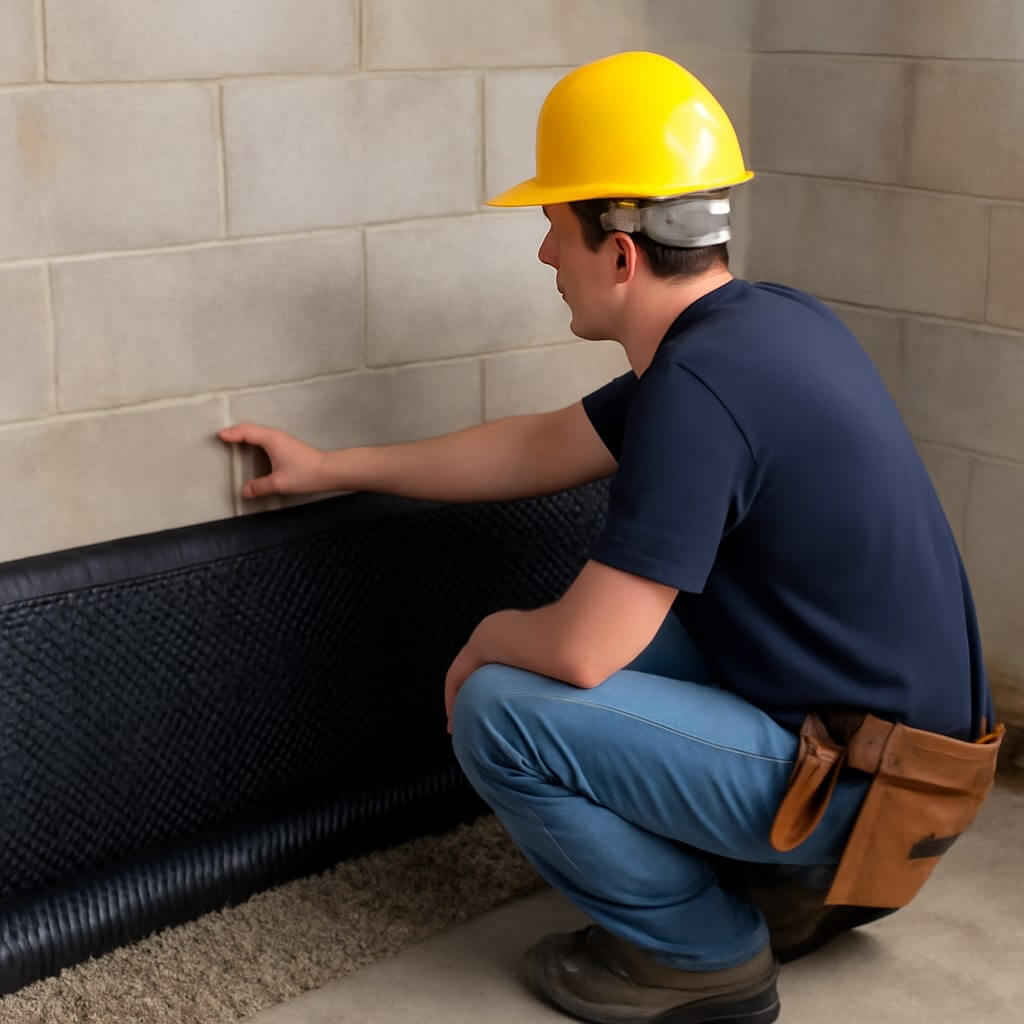When you’re constructing a new build basement, it’s essential to recognize the common mistakes that can jeopardize your waterproofing efforts. Neglecting proper drainage solutions or using subpar materials can lead to significant issues down the line. Additionally, skipping necessary surface preparation or overlooking construction joints may compromise your basement’s integrity. Understanding these pitfalls is vital for ensuring a dry, safe environment. What specific steps can you take to avoid these costly errors?
Key Takeaways
- Neglecting proper site drainage can lead to water infiltration; ensure yard grading directs water away from the foundation.
- Using inadequate waterproofing materials compromises basement protection; choose durable, compatible products to withstand moisture and hydrostatic pressure.
- Skipping thorough surface preparation can cause significant issues; assess and repair substrates before applying waterproofing materials.
- Overlooking cracks and construction joints allows moisture penetration; use high-quality sealing products to fill gaps thoroughly.
- Ignoring ventilation and humidity control can result in mold growth; install ventilation systems and monitor humidity levels between 30-50%.
Neglecting Site Drainage Solutions
When you overlook site drainage solutions, you greatly increase the risk of water infiltration in your basement. Proper site grading is essential; it directs water away from your foundation.
Verify the slope of your yard promotes effective runoff, preventing water accumulation near the base. Additionally, install drainage channels to capture and redirect excess water. These channels help manage surface water and reduce hydrostatic pressure against your walls.
Without these measures, you risk costly damage and mold growth. Prioritizing site drainage solutions during construction provides long-term protection, keeping your basement dry and safe from water-related issues.
Using Inadequate Waterproofing Materials
Choosing inadequate waterproofing materials can undermine your efforts to keep your basement dry and protected. It’s essential to select materials with high durability to withstand moisture and potential hydrostatic pressure.
Additionally, verify product compatibility with your existing building elements; mismatched materials can lead to failures and leaks. For instance, using a membrane that doesn’t adhere properly to concrete can create vulnerabilities.
Always consider the long-term performance of your chosen materials, as subpar options may deteriorate quickly. Invest in quality products designed for basement applications to provide reliable protection and peace of mind against water intrusion.
Skipping Proper Surface Preparation
Although you might be keen to start waterproofing your basement, skipping proper surface preparation can lead to significant problems down the line.
To guarantee a successful waterproofing process, follow these essential steps:
- Conduct a thorough substrate assessment to identify any weaknesses.
- Use effective surface cleaning techniques to remove dirt and debris.
- Repair any existing damage before applying waterproofing materials.
- Allow the surface to dry completely to prevent trapping moisture.
Overlooking Construction Joints and Cracks
While you might focus on applying waterproofing materials to walls and floors, overlooking construction joints and cracks can undermine your efforts.
During construction inspections, pay close attention to these areas, as they’re potential weak points for water infiltration. Cracks can develop due to settling, and if left unsealed, they’ll allow moisture to penetrate.
Use high-quality crack sealing products specifically designed for your basement environment. Make certain you fill these gaps thoroughly before applying any waterproofing treatments.
Failing to Address Groundwater Pressure
Ignoring groundwater pressure can lead to significant basement issues, as hydrostatic pressure builds up against your foundation walls.
Implementing a proper drainage system is essential to redirect this pressure, while selecting the right waterproofing materials will enhance your protection against moisture intrusion.
Addressing these factors proactively can save you from costly repairs down the line.
Understanding Hydrostatic Pressure
Hydrostatic pressure is a critical factor in basement waterproofing that many homeowners overlook, leading to significant water intrusion issues.
To effectively manage hydrostatic pressure, consider these key points:
- Soil Saturation: Understand how saturated soil increases hydrostatic pressure against your foundation.
- Water Table Levels: Monitor changes in the water table that could elevate pressure.
- Pressure Relief: Implement pressure relief systems to divert water away from your basement.
- Regular Inspections: Schedule inspections to identify potential pressure issues early.
Addressing hydrostatic pressure proactively can save you from costly repairs and protect your home’s integrity.
Proper Drainage Systems
Effective management of hydrostatic pressure naturally leads to the need for proper drainage systems. You must implement a thoughtful drainage design that effectively channels water away from your basement.
Utilize perforated drainpipes and gravel trenches to create efficient pathways for groundwater. Proper installation techniques are essential; make certain pipes are sloped adequately to facilitate flow. Incorporate sump pumps where necessary for additional water removal.
Additionally, maintain a clear drainage path by regularly checking for clogs or blockages. By addressing groundwater pressure proactively, you’ll protect your basement from potential flooding and structural damage, guaranteeing long-term durability.
Waterproofing Material Selection
When selecting waterproofing materials, it’s crucial to evaluate the specific challenges posed by groundwater pressure, as failing to do so can lead to inadequate protection and costly repairs.
Consider the following key aspects:
- Membrane Types: Choose between liquid-applied and sheet membranes based on your foundation’s needs.
- Sealant Options: Select high-quality sealants that can withstand hydrostatic pressure and resist mold growth.
- Application Method: Confirm proper installation techniques to maximize effectiveness.
- Long-term Durability: Opt for materials that offer longevity and require minimal maintenance over time.
Ignoring Ventilation and Humidity Control
Although many homeowners focus solely on sealing cracks and applying waterproof coatings, neglecting ventilation and humidity control can lead to persistent moisture issues in your basement.
Effective humidity management is essential; without it, damp air can linger, fostering mold growth and structural damage.
Installing proper ventilation systems helps to circulate air and reduce humidity levels.
Consider using dehumidifiers to maintain ideal moisture levels, especially in warmer months.
Regularly monitor humidity levels, aiming for 30-50% relative humidity.
Conclusion
To guarantee your new build basement remains dry and free from moisture issues, it is crucial to avoid these common mistakes. Prioritize effective site drainage, invest in high-quality waterproofing materials, and prepare surfaces thoroughly. Don’t overlook construction joints and cracks, and address groundwater pressure proactively. Finally, maintain proper ventilation and humidity control to safeguard your space. By taking these precautions, you’ll protect your investment and create a healthy, moisture-free environment in your basement.

